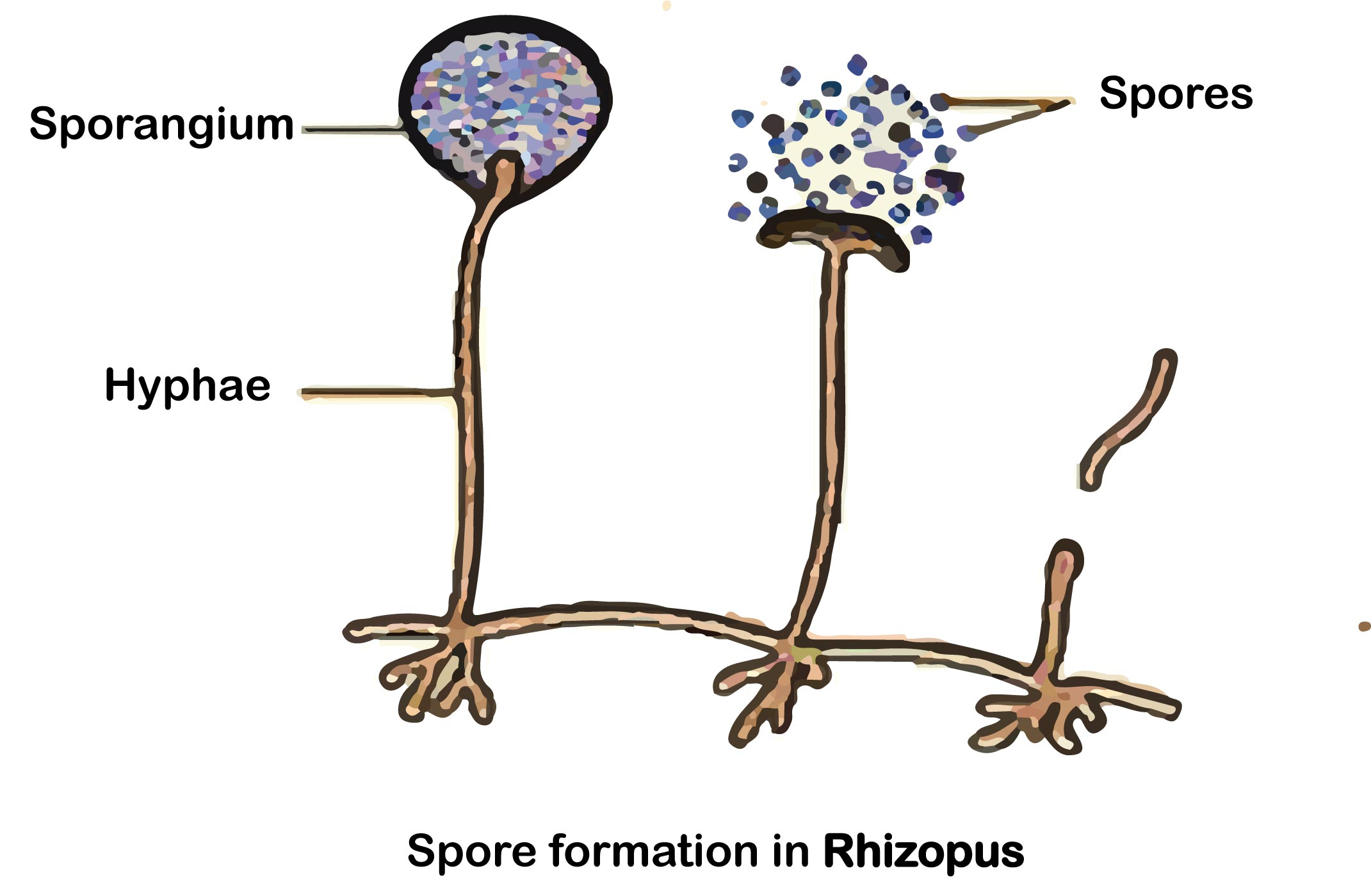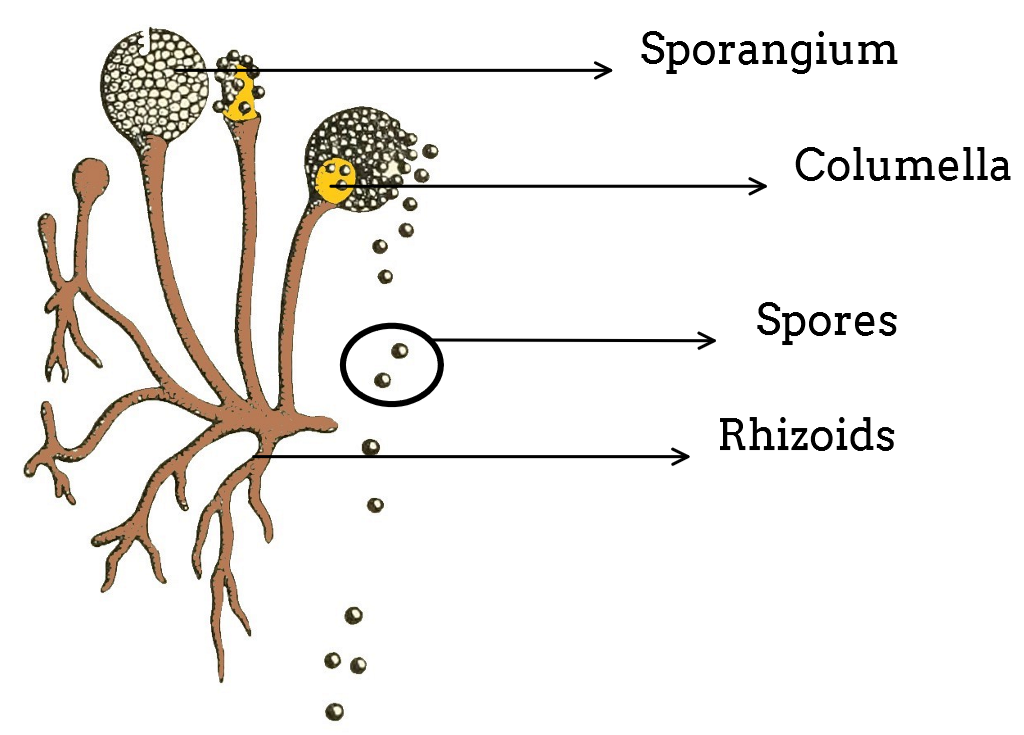
Rhizopus reproduces by the method of-
(a) Regeneration
(b) Spore formation
(c) Budding
(d) Fragmentation
Answer
426k+ views
Hint: Rhizopus is a saprotrophic fungus that attacks the variety of foodstuffs. Soft rot or leak disease of strawberry, apple, jackfruit, etc. is due to Rhizopus. They reproduce using special single- cell structures that are dispersed through different media. They develop within special structures.
Complete answer:
Rhizopus comes under a class of zygomycetes. This class of fungi reproduces through spore formation. Asexual reproduction occurs through spores. These are the single- celled specialized structures that separate from the organism, get dispersed, and germinate to produce new mycelium after falling on a suitable substrate. The spores produced during asexual reproduction in fungi are formed by mitotic divisions and are thus termed as mitospores. Mitospores are non- motile. They are called sporangiospores as the spores are formed inside sporangia that are borne at the tips of special hyphae called sporangiophores. Sexual reproduction occurs through conjugation. Because of it, these are also called conjugation fungi. Sporangiospores are thin- walled non- motile spores produced endogenously in a sporangium due to favorable conditions, which after liberation gives rise to new mycelium.


So, the answer is, “Spore formation.”
Additional Information:
- Sexual reproduction produces a resting spore that is a diploid spore and zygospore. Because of the presence of a zygospore, the group of fungi is called zygomycetes.
- Zygospore is the site of meiosis and does not give rise to new mycelium directly. Instead it produces a new sporangium called germ sporangium.
Note: Sporangiospore is a means of asexual reproduction that should not be confused with oospores, ascospores, and basidiospores which are means of sexual reproduction. These sexual spores form different classes of fungi and develop special stalks bearing them.
Complete answer:
Rhizopus comes under a class of zygomycetes. This class of fungi reproduces through spore formation. Asexual reproduction occurs through spores. These are the single- celled specialized structures that separate from the organism, get dispersed, and germinate to produce new mycelium after falling on a suitable substrate. The spores produced during asexual reproduction in fungi are formed by mitotic divisions and are thus termed as mitospores. Mitospores are non- motile. They are called sporangiospores as the spores are formed inside sporangia that are borne at the tips of special hyphae called sporangiophores. Sexual reproduction occurs through conjugation. Because of it, these are also called conjugation fungi. Sporangiospores are thin- walled non- motile spores produced endogenously in a sporangium due to favorable conditions, which after liberation gives rise to new mycelium.


So, the answer is, “Spore formation.”
Additional Information:
- Sexual reproduction produces a resting spore that is a diploid spore and zygospore. Because of the presence of a zygospore, the group of fungi is called zygomycetes.
- Zygospore is the site of meiosis and does not give rise to new mycelium directly. Instead it produces a new sporangium called germ sporangium.
Note: Sporangiospore is a means of asexual reproduction that should not be confused with oospores, ascospores, and basidiospores which are means of sexual reproduction. These sexual spores form different classes of fungi and develop special stalks bearing them.
Recently Updated Pages
How do you factor x2 + x 20 0 class 9 maths CBSE

How do you solve y6x and 2x+3y20 using substitutio class 9 maths CBSE

Chipko movement originated in Gopeshwar in A 1953 B class 9 biology CBSE

The adjacent sides in the parallelogram are supplementary class 9 maths CBSE

The compound used in plastic industry is A Vinyl acetate class 9 chemistry CBSE

How do you solve for y in 2left y dfrac12 right 4left class 9 maths CBSE

Trending doubts
According to Bernoullis equation the expression which class 11 physics CBSE

Draw a diagram of nephron and explain its structur class 11 biology CBSE

Differentiate between calcination and roasting class 11 chemistry CBSE

A solution of a substance X is used for white washing class 11 chemistry CBSE

What is spore formation class 11 biology CBSE

10 examples of friction in our daily life




